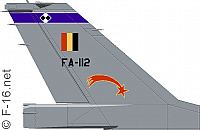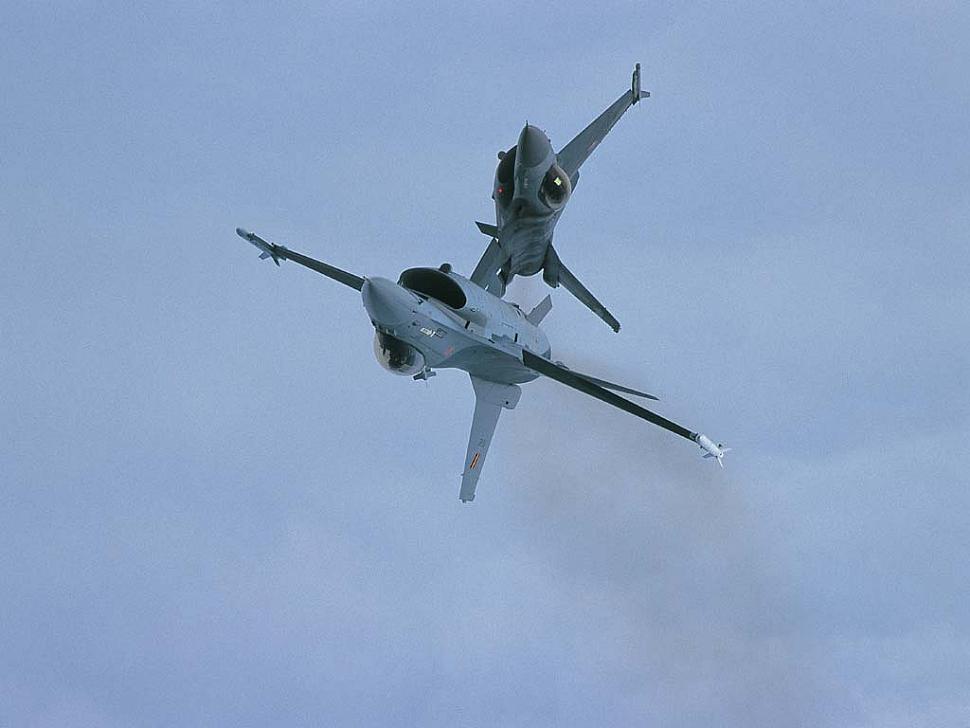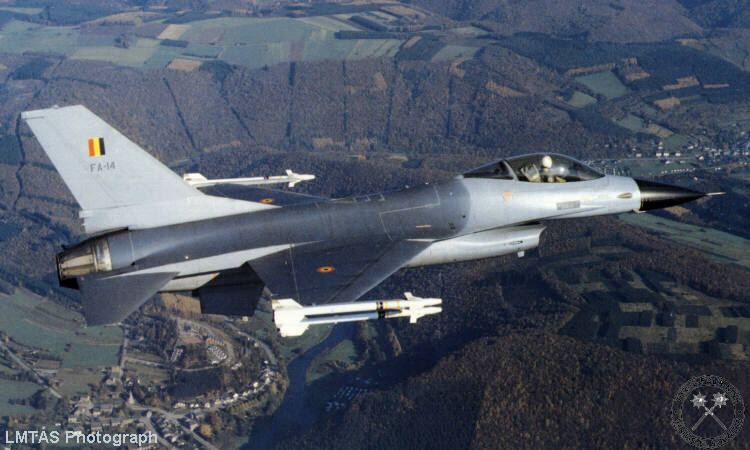Introduction
The Belgian Air Force was one of the first four international customers for the F-16 Fighting Falcon. Belgium ordered a total of 160 F-16s in two batches. Heavy attrition and restructuring of the armed forces reduced the operational inventory to 54 aircraft. The remaining aircraft have been stored or sold (14 to Jordan for example).
Although the entire inventory consists of F-16A and F-16B models, all 54 remaining operational aircraft have been upgraded to MLU standard. No decision has been taken on possible replacements, if any.
History
In the late 1970s, Belgium, Denmark, Norway and the Netherlands started looking for a replacement for the F-104 Starfighter. These four nations, known as the European Participating Air Forces (EPAF), became the first international customers for the F-16. Together with the US, they started a unique multi-national development program for the F-16. Under the terms of the agreement, F-16 Fighting Falcons for the EPAF nations were to be produced locally.
Belgium was one of two EPAF nations responsible for the European production of F-16s (the other one being the Netherlands). The primary Belgian contractor in the F-16 program was the Societe Anonyme Belge de Constructions Aeronautiques (SABCA), responsible for the final assembly of F-16s intended for both Belgian and Danish service, The F100 engines for the F-16s of all four nations in the European consortium were manufactured by the Belgian Fabrique National.(now Techspace Aero). The Belgian company MBLE produced the F-16 radar for three of the four EPAF nations.
The EPAF consortium funded, developed and produced an initial 348 F-16s, with an eventual total of 524, for their respective air forces. SABCA even produced 3 F-16s for the US Air Force
Belgium ordered a total of 160 F-16s. Heavy restructuring after the end of the Cold War hit the Belgian Air Force (BAF) hard. It ceased to exist as an independent entity and became the Belgian Armed Forces Air Component (COMOPSAIR). The F-16 inventory was reduced to 72 airframes (updated to MLU standard). It lost one of its 3 F-16 wings and currently operates 2 Wings with 2 Squadrons each. The fighter fleet will be further reduced to 60 aircraft by 2015.
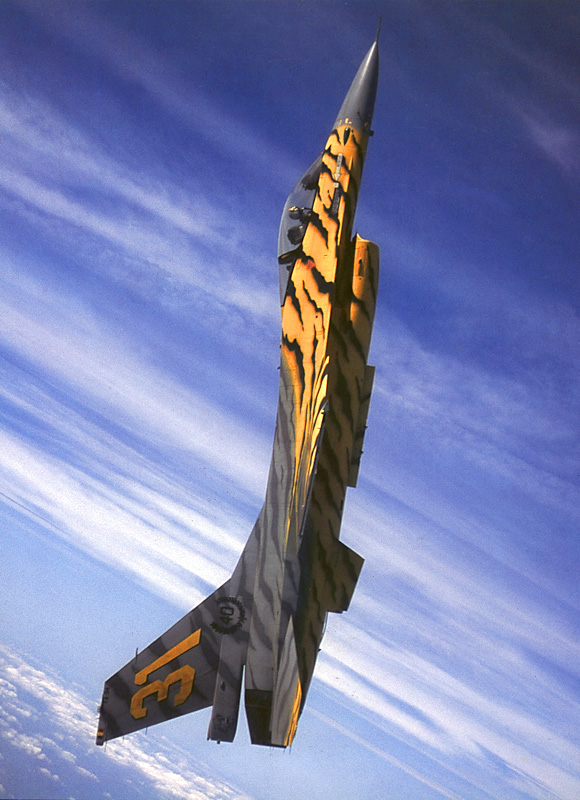
Inventory
Initial Order
The initial Belgian order was for 116 F-16 aircraft (96 single-seaters and 20 two-seaters). In February 1978, the first European F-16 assembly line opened at SABCA, followed by the first flight of a Belgian-built F-16 on December 11, 1978. The aircraft, #FB-01 (an F-16B block 1), was flown by SABCA test pilot Serge Martin with General Dynamics test pilot Neil Anderson riding in the back seat. It was accepted by the Belgian AF on January 29th, 1979, being the first locally built F-16 to be delivered to a European Operator.
Beginning in September 1981, 35 early production Belgian F-16s (the Block 1s and Block 5s) were rotated back through the SABCA factory for cockpit modifications and some updating of the avionics, including the APG-66 radar. The modifications effectively brought the 35 airframes up to block 10 standards.
Delivery of these first 116 aircraft to the Belgische Luchtmacht / Force Aerienne Belge (Belgian Air Force) was completed in May of 1985, with a final batch of block 15's.
Follow-On Order
A follow-on batch of 44 block 15OCU aircraft was ordered in February of 1983 and delivered between 1987 and 1991, consisting of 40 A and 4 B models.
The early 90's saw a drastic reduction of the Belgian military budget - the politicians desperately wanted to cash in on the 'peace dividend' and it was decided that from now on the BLu/FAB could do with 72 operational F-16s and 18 operational spares (totaling 90 aircraft, of which 84 are A and 6 B models). Initially, 31 airframes (30 F-16A Block 10 and 1 F-16B Block 10) were put in storage at Weelde AB, a NATO reserve airfield and are offered for sale. An additional 10 airframes are to be put in storage later on since only 90 aircraft will go through the MLU upgrade (see Modifications).
Defence reorganisation plans announced at the end of 2003 stated that the Belgian F-16 fleet will be reduced to only 60 aircraft in 2015. The first phase - a reduction to 72 aircraft - took place in 2004-2005. The second phase - a reduction to 60 aircraft - will take place later in the decade. This means that in 2015 the 4 squadrons will be equipped with 15 aircraft each, of which 12 will be provided to NATO for operational deployments.
With more cutbacks the decision to reduce to 60 airframes was put forward and in 2010 it was decided to bring back the number of F-16s to the projected 60 airframes. Even more so continued financial difficulties led to another 6 airframes being layed up in 2012 effectively reducing the number of F-16s to 54 airframes. These last 6 airframes are not to be sold, but kept on board to assure that the entire operational fleet can be kept flying untill the targeted replacement date of 2023, hence some attrition to occur between 2012 and than.
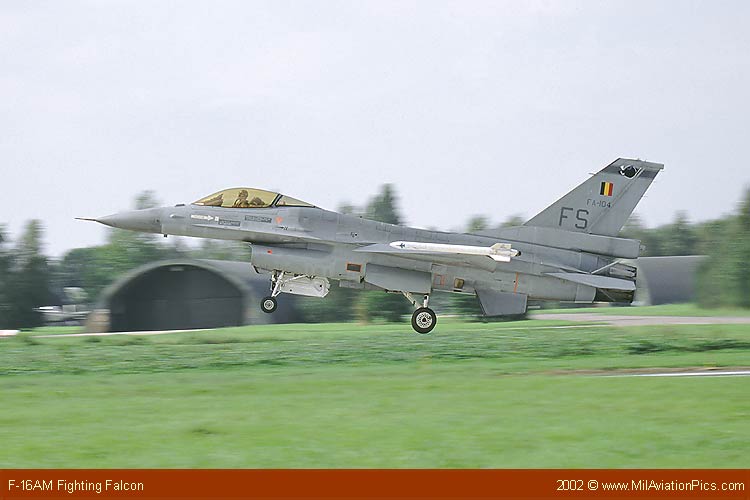
| Program | Model | Block | Qty. | Serials | Delivered |
|---|---|---|---|---|---|
| Initial Order | F-16A | Block 1 | 17 | FA-01/FA-17 | 1979-1980 |
| F-16B | Block 1 | 6 | FB-01/FB-06 | 1979-1980 | |
| F-16A | block 5 | 8 | FA-18/FA-25 | 1980-1981 | |
| F-16B | Block 5 | 4 | FB-07/FB-10 | 1980-1981 | |
| F-16A | Block 10 | 30 | FA-26/FA-55 | 1981-1982 | |
| F-16B | Block 10 | 2 | FB-11/FB-12 | 1981-1982 | |
| F-16A | Block 15 | 41 | FA-56/FA-96 | 1983-1985 | |
| F-16B | Block 15 | 8 | FB-13/FB-20 | 1982-1983 | |
| Follow-On Order | F-16A | Block 15OCU | 40 | FA-97/FA-136 | 1988-1991 |
| F-16B | Block 15OCU | 4 | FB-21/FB-24 | 1989-1990 |
Modifications & Armament
Carapace ECM equipment
Rather than using an externally-carried pod, in 1979 Belgium decided to adopt the Loral RAPPORT III (Rapid Alert Programmed Power Management and Radar) internal electronic countermeasures suite. The RAPPORT system had originally been developed for the BLu/FAB following a study of an electronics countermeasures package for the Mirage VB in the light of Israeli experience during the 1973 Yom Kippur War. Part of the system was carried in an extended fairing at the base of the tail of the tail fin, and offered the advantage of not taking up a hardpoint or adding to overall aircraft drag. It was designed to be compatible with the RAPPORT II equipment still carried by Belgian Mirage 5BR and 5BA fighters. On the other hand, the disadvantage was that it took up internal avionics growth space.
Ultimately, the RAPPORT III program was cancelled , and it took years of political debating before the Belgian military finally got the go-ahead, and a contract was awarded to the French Dassault company. (Years later, in 1996, proof of large bribe sums, paid by Dassault to the Walloon Socialist Party, was found and nearly caused the government to fall.) This program resulted in CARAPACE, a very comprehensive system, which finally allowed Belgian F-16s to be put to use in operational conditions (such as NATO peace-keeping missions over Bosnia). Modified F-16s can be easily recognized by the fairing under the intake, and the RWR's in the drag chute compartment.
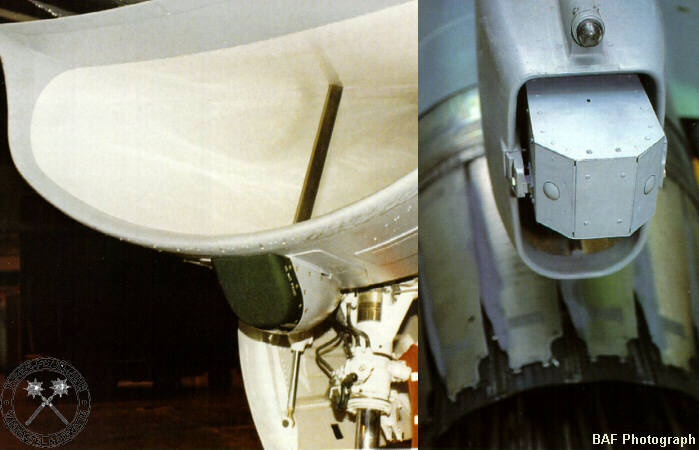
Modular Reconaissaince Pod
Following the withdrawal of Belgium's Mirage 5BR reconnaissance aircraft from service, a couple of F-16A's of no. 2 Wing at Florennes were modified to carry the Dutch-built Oude Delft Orpheus underfuselage camera pod, 3 of which were on loan from 306 sqn, KLu. These were later replaced by 8 modular recce pods from the Danish Per Udsen Company (now Terma), which are also used by Danish F-16s.
The first two Modular Recce Pods (MRP) are configured for low-level recce and arrived in September 1998, the six others will be configured for medium-altitude reconnaissance. Interesting to note is that the pods at first were equipped with the cameras from the retired Mirage aircraft. As of 2001 the pods are equipped with new digital cameras and an infrared line scanner, which makes it possible to have a real-time reconnaissance platform.
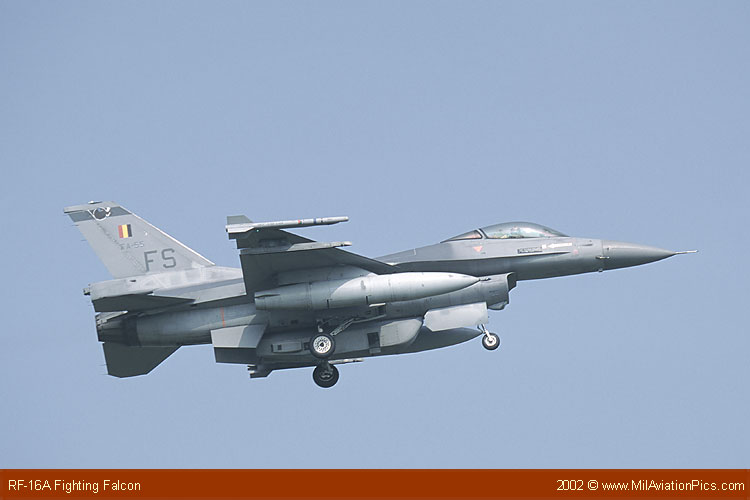
Mid-life Update
Along with the Fighting Falcons serving with other European members of the F-16 pool, Belgian F-16s were scheduled to go through a Mid-Life Update (MLU) during the mid-1990s. An agreement on the MLU was finalized on January 26, 1993 between the European and US members of the Multinational Fighter Program. Due to drastic cutbacks in the size of the BAF, the number of F-16A/B aircraft to go through the MLU had originally been cut back to 48. In 1997, funds were granted to modify another 24 F-16s, while the fate of the remaining 18 aircraft was to be decided upon later on. Early 1998, the decision was taken to modify the last 18 airframes as well, since the cost of maintaining two different types of F-16s would be too high.
Armament
Standard weapons fit for the Belgian F-16s is the AIM-9 Sidewinder and iron bombs (Mk 82 GP bomb in three different versions: BSU-49 RT 'Balloot', MAU-93 NRT 'Slick', Mk 15 RT 'Snakeye'). Recently (1995-1996) deals have been concluded concerning the purchase of 72 AIM-120 AMRAAM and 12 TAGM-65 Maverick missiles. The acquired numbers may seem rather small: the Belgian AF lacks funds to maintain a war stock and the decision was taken to buy sufficient rounds to train both weapon handlers and pilots, and buy or loan more when and if needed. After 'Allied Force' the Belgian government decided to expand it's stock of high profile weapons and another batch of AMRAAM's and about 40 AGM-65 were bought to complement the stock.
With the introduction of the MLU aircraft, other weapon systems could also be used. Besides the above mentioned AIM-120 and AGM-65 weapons, the Belgian AF acquired a batch of GBU-10, GBU-12 and GBU-24 laser-guided bombs in 2000. The acquisition of a number of GBU-31 JDAM bombs is under consideration. To make optimal use of these weapons the Belgian government decided in 2000 to buy 8 AN/AAQ-14 Sharpshooter targeting pods. About 50 NVG's were also acquired to make it easier for the pilots to execute operations at night.
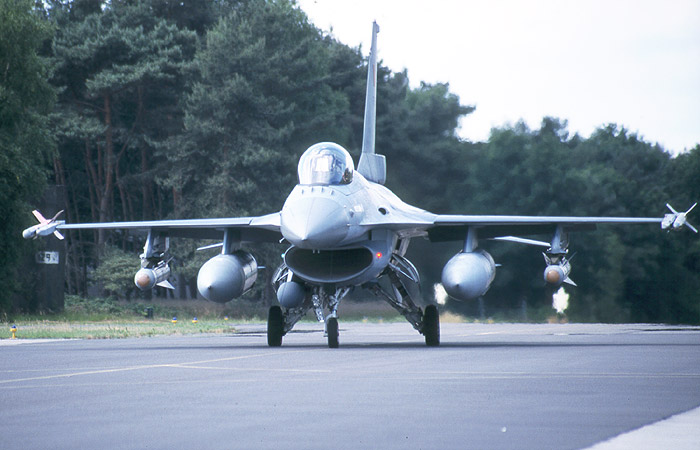
Other
The Belgian Air force has also acquired a number of Pylon Integrated Dispenser Stations, which are also from Danish origin and are used by the RDAF.
In November 1998, the Belgian cabinet approved the acquisition of eleven additional second-hand AN/ALQ-131 ECM pods and of eleven modifications kits to bring them to Block-2 standards. The Belgian AF now has a total of 36 AN/ALQ-131 ECM pods at it's disposal.
Together with the defense reorganisation plans announced in 2003, the Belgian government decided on a small investment plan for the F-16 fleet. Part of this is the acquisition of a microwave landing system, new software upgrades covering current hardware like the IFF system, ECM system, and the "Link 16" communication interface. Further investments include the purchase of new sensors to convert existing Mk 84 bombs into precision guided munitions (INS/GPS kits to convert to GBU-31 JDAM), an extra 6 LANTIRN targeting pods and a Helmet Mounted Cueing System (HMCS). The order for 6 LANTIRN systems was converted to an order for 8 SNIPER advanced targeting pods afterwards.
Currently the Belgian (#FA-91 being the first), and other European Air Forces F-16s, are receiving a new colored display and Link 16 terminal (transmitter/receiver). This is part of the M3 Upgrade within the MLU program. The M3 gives the capacity to work with the Joint Helmet-Mounted Cueing System. This gives the pilot the possibility of firing an AIM-9X (or other advanced air-to-air) missile on a target while only 'looking and pulling the firing button'. The M4 software integration is expected in 2006.
Operational Service
Units
Please refer to the F-16 Units section for an overview of units.Deployments
All 54 F-16s of the Belgian Air Component are assigned to NATO, with 28 aircraft (two squadrons) allocated to the Rapid Reaction Forces.
In 1996 Belgium and the Netherlands signed a DATF (Deplayable Air Task Force) agreement. This makes a joint deployment of fighters, but also of military transport aircraft, possible.
Immediately after signing this agreement, the Belgian AF joined the RNlAF at Villafranca AFB in Italy in an operation called 'Joint Falcon'. At first the number of Belgian F-16s was limited to 4, but with the tension in the region rising, the total number rose to as much as 12 aircraft during operation 'Allied Force' in 1999.
Just before the conflict started in March, the first MLU aircraft were sent over to Italy, which greatly expanded the possibilities of the DATF. During that conflict, F-16s of 349 sqn dropped live GBU-12 weapons as first unit in the Belgian AF. At that time the fighters were based at Amendola AFB in the south of Italy. After the conflict the number of F-16s decreased untill the last F-16 returned home in 2001, ending the very first Belgian operational deployment after WWII.
With the three Baltic republics - Latvia, Lithuania and Estonia - becoming members of NATO on March 29th, 2004 they asked NATO for air coverage. These countries don't possess dedicated air defence fighters themselves and therefor asked help from the alliance. The Belgian government decided to send 4 F-16 fighters from 349 sqn to Siauliai AB for a six-week rotation, replaced by 350 sqn aircraft for the second six-week rotation. This marks the first operational deployment of NATO fighters in former Soviet states.
From July 14th, 2005 till January 14th, 2006; 4 Belgian F-16s formed a DATF with 4 Dutch F-16s in Afghanistan. This mission was intended to back-up the NATO led ISAF mission during the Afghan elections.
In later years from 2008 onwards) the Belgian air force has provided a continues effort to the ISAF forces with 4 to 6 F-16s assigned at all times. This effort continues till today (2014). Also another two deployments to Lithuania have taken place during the same time period as well as 6 F-16s that provided air cover during the Libyan campaign in 2011.
Special thanks
- Wim Dielen;
- TheRipper.
Please use this form to add any list any error or omissions you find in the above text.
Note: your comments will be displayed immediately on this page. If you wish to send a private comment to the webmasters, please use the Contact Us link.

